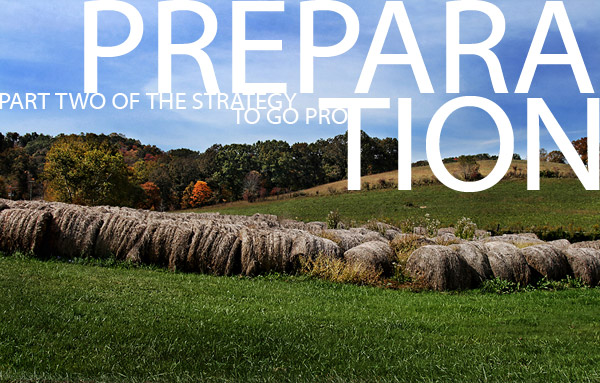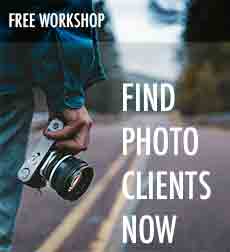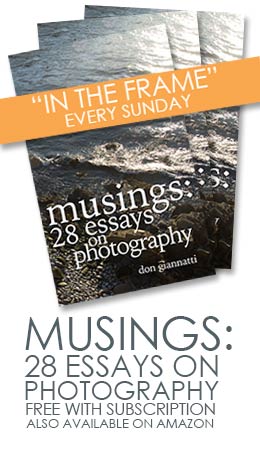This part two of a series on Going Pro from my perspective, experience and research. (Part One here)
This one we call “preparation” because before we can launch into strategical and implementation, we must be prepared. Just as a surgeon prepares for his craft with medical school and internship and ridiculous amounts of study, we photographers have to work for preparation. It is very similar.
Without the cool knives and blood and stuff. In most cases.
So let’s recap with what we did last time.
“Discovery” was an attempt to find out what our locality was all about in direct relationship to our photographic business plans. Are we going to find a niche, or will we have to scrap for one? Will there be enough clients to sustain the kind of work we want to do? Who our competitors are, and what they do? And we have worked on finding out if the kind of work we want to do can be done in our area.
This is kind of a tough one for a lot of us. We so desperately want to shoot something that the area won’t sustain. If working with fashion is your thing, and you live in the middle of Iowa or Colorado, it may not be as rewarding as you thought it should be. If photographing extreme sports is your love, and you live somewhere where ‘extreme’ sports equals kids skateboarding at the mall, it may be more frustrating than exciting.
So this is a gut check time. If you are dedicated to shooting extreme sports, you will have to definitely consider a major lifestyle change to be where the action is. No one said it was easy, just that it was important. I will leave you to your thoughts on that one… no advice other than this: There is NO good time to make a major change. There is NO good time to uproot a family and go somewhere new. It can be terrifying and exhilarating at the same time. And it can drain one of a lot of assets.
But since there is no GOOD time to do it, there may not be any BAD time to do it either. There is only YOUR time. Today. Tomorrow and the next day are only a promise. Make your today’s be what YOU want them to be. Carpe Diem is not just for fairy tales, ya know.
So get out your research materials from part one and let’s begin.
You have your 10 – 20 researched photographers in front of you. You have organized them in your own way and now we have to do some sorting.
1. What are your capabilities?
You have identified the kind of work you want to do. And with the discover process you have found the photographers who do that kind of work in your area. Does the work in your community/region call for a studio approach? Are there many shooters doing location work? These questions are within your genre… we are talking about you going out to compete within the genre you have chosen.
If you have chosen a genre that is not represented at all in the research you have done, that usually means that there is a niche that is wide open, or there is no need for that work and no one is wasting marketing to try to sell it. Exciting when it is the former – sucks a bit if it is the latter. You will have to dig a bit more to find out what is really going on. Sometimes, like fashion in a small Nevada town, it is obvious. Other times it may not be, so you have to dig and find either what you missed or a genuine opportunity.
This leads to your capabilities. What can you do?
Some of that is gear related, of course, but I do not want to turn this into a gear list of ‘what to buy’. You need what you need. Period. And you determine what you need with the careful study of what you want to do versus what you can do.
This is a wonderful skip out, BTW… it is so easy to not do something because we don’t have what we need to do it. It usually happens with the planning of a shot that cannot be done within our comfort / asset level. We want a Corvette on a hill side with a tall blond playing the cello – at sunset – overlooking the ocean.
Problem is – we have no access to a Corvette, a blond, or a cello and we live in Butte, Montana. So nothing gets done. And we have a terrific excuse as to why we don’t have new shots in our book… “just couldn’t put it together cause of this and that and how horrible that we live in a town where… ” Blah blah blah.
What CAN you do – and how can you get it produced for your book? This is the capabilities exercise. And it is important for moving forward into the portfolio stage.
Setting expectations out of range is a guarantee fail, so make sure you don’t go there. Setting the goals too low will produce mediocre work, and that is no way to go either.
More after the jump:
2. Filling in the Portfolio:
You have the competing photographer’s portfolios in your bookmarks, or printed out in your folder. You can see what is being done in your area. I hope you have done the exercise of making the notes and finding out where you are in relationship to the shooters in your area. That is an important part of discovery, and should not be skipped.
Now we compare and contrast to the already established photographers. Are you more technical? Are you more ‘artsy’ or ‘conceptual’? Will you bring something to the table that is unique, or will you try to compete on price? (Hint – no. Do not compete on price.) Why do you think you are ready? And if there are some holes or gaps in your work, what are they?
Take a hard look at your book. Does it show your best work? Does it stand up to the other photographer’s in the area you are preparing to work in? What do you need to do to bring it up to par… and if the work is up to par, are there any area which could take a bit more attention to really drive the work home in the mind of the client?
Many times we find that there are gaps in our portfolio. Instead of 30 great images, we find that we really have about 17 great images and some other ones that we thought would ‘get by’ because the other shots were so good. That means there are gaps in the work. If that is your portfolio, what is your plan to fill in the gaps in your portfolio?
Go ahead, write it down. Type it out. Put it in your iPad. Post it on your sticky note board.
Plan on working on your portfolio as you would an assignment.
I worked with a photographer from the Pacific Northwest who wanted to break into the fashion genre and work commercially as well. He was well on his way with the fashion / lifestyle and what he wanted to do was to add food to his offering. We worked on getting some very simple, elegant food shots done for the portfolio. The style remained the same as his lifestyle / fashion – elegant, simply presented and without a lot of peripheral. I think of his style as capturing the ‘essence’ of the subject.
After he left Phoenix and went back home, he kept shooting the food and adding it to his book. The work helped to establish him as a serious player and a contender for some commercial assignments he was going after.
He identified his goal, looked at his book and compared it to the local talent he would be competing with. He stepped his work up a notch and began to fill in the work that was missing. And he did it in a very methodical, assignment driven way that made it far more exciting, as well as more relevant to hi planning.
3. Finding the Passion to Create
Preparation is a tough place to be for a lot of us. Impatient to break out, and scared to death that every day we are working on our own meant that someone else may be taking up the slack. And, well, that happens. It happens to them when you are working and they are not, so it is pretty much a wash in many situations.
But it is important for your work and your sanity to set some time parameters.
Can you add two pieces a week to the portfolio? Good pieces, not just grab shots that get a pass through some sort of filter.
Can you do more? Or would a couple of good shots a month be what can be fit in between the work and the other obligations we all have? That’s OK.
As long as you stick to YOUR schedule all is good. Skipping or finding excuses to not do it will not be a good thing.
It can lead to disappointment in yourself, and a lessening of the passion that is driving you to go into this hectic, scary, ultimately incredible business. Don’t let that happen.
Putting it all together.
You have your portfolio, a plan on filling in the gaps, an idea of what you want to do in the area. You even have a real knowledge of what is being done and how you are going to fit in. You have examined the competition, found your strengths and discovered some weaknesses. And you have a plan for fixing the weaknesses while building the book.
Your timeline is essential to your progress, so be fair to yourself and make it one you can handle. BTW, if you are interested, we have a fun little group that is working on portfolio building and business planning over at Project 52. Join us for an assignment every week.
Tell me about what you are planning in the comments and ask any questions you have. I will answer, and hopefully other followers will drop in with what they are doing and with ideas as well.
Next time: Strategy.
Follow me on Twitter, visit the Learn to Light workshop page for information on the workshops, and find out more about me here. Thanks for coming along.






Hey, great read really. Thanks.
I have been shooting for about 2 years and was just tossing up photos. (which you can see here: http://framedphotography.ca
I am just now in the process of weeding out the weak photos but am finding it difficult. What people like is so personal, sometimes I go back and forth on a photo and post it thinking it’s not the greatest and turns out to be a fav of many…
I do need to make time for more personal work to develop my port though. Hard to compare in my area as well. No one is editing their work here, beyond removing pimples or crappy filters. I am very busy but fear I am undercharging. Again, I have no point of reference as no one is doing what I do in my city.